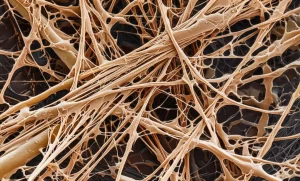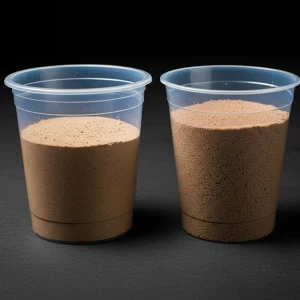Soil Superheroes: How Microbes Fight Wheat Disease e Boost Yield
Hey there! Let’s chat about something super important: the food we eat, specifically wheat. It’s a staple for so many folks around the globe, but it faces some tough challenges. One of the nastiest is something called Fusarium crown rot (FCR). It’s caused by a sneaky fungus, Fusarium pseudograminearum, and it can absolutely decimate wheat fields, leading to huge losses and even producing toxins that aren’t great for us.
Now, traditionally, farmers might reach for chemical sprays to fight this off. And sure, they can work in the short term. But honestly, we all know those chemicals can have downsides – they can mess with the environment and potentially impact our health. So, what if we could find a more natural, friendly way to protect our wheat? That’s where the amazing world of microbes comes in!
Enter the Microbial Dream Team
Think of soil as a bustling city, full of tiny residents – bacteria, fungi, and all sorts of microscopic life. Some of these residents are helpful, some are harmful, and some are just doing their thing. The area right around plant roots, called the rhizosphere, is usually where all the action is, thanks to yummy root exudates. But the soil *just* beyond that, the “root-zone,” is also crucial for soil health and stability, even if it’s a bit less lively. We wanted to see if we could introduce some beneficial microbes to this root-zone area and help the wheat fight off FCR.
We focused on two specific microbial candidates: Trichoderma harzianum LTR-2 and Arthrobacter ureafaciens DnL1-1. Trichoderma species are already famous biocontrol agents, known for fighting off plant diseases. And our pal Arthrobacter ureafaciens DnL1-1? We already knew it was pretty good at promoting root growth and helping plants access nutrients like phosphorus. So, we had a hunch that teaming them up, or even using Trichoderma alone, could make a real difference.
Putting It to the Test
We set up a proper field experiment, like a real-world test kitchen for microbes. We had four different scenarios, or “treatments”:
- Control: Just regular wheat seeds in regular soil (no disease added).
- FP (Fusarium pseudograminearum): Wheat seeds in soil where we *added* the disease-causing fungus. This was our “negative control” to see how bad the disease gets without help.
- LFP (LTR-2 + FP): Wheat seeds coated with the Trichoderma harzianum LTR-2 spores, planted in soil with the disease fungus.
- HFP (LTR-2 + DnL1-1 + FP): Wheat seeds coated with *both* Trichoderma harzianum LTR-2 and Arthrobacter ureafaciens DnL1-1, planted in soil with the disease fungus.
We basically gave the wheat seeds a microbial bodyguard treatment before they even went into the ground! We then waited and watched how the wheat grew, how much disease showed up, and what was happening in the soil’s microbial community.
The Results Are In! (Spoiler: Microbes Win)
And boy, did our microbial friends deliver! When we checked on the wheat, both the LFP (single microbe) and HFP (microbial duo) treatments significantly slashed the amount of FCR disease we saw. The single Trichoderma treatment cut the disease index by over 50%, and the combination treatment was even better, reducing it by nearly 68%! That’s a massive difference compared to the FP group where the disease ran rampant.

And the benefits didn’t stop at disease control. The wheat plants in the treated plots were just happier and healthier. The yield increased dramatically – over 58% higher for the LFP treatment and an incredible over 64% higher for the HFP combination compared to the diseased FP group! Plus, the levels of that nasty DON toxin were much lower in the treated groups. It seems giving the seeds a microbial coating really sets the wheat up for success. Interestingly, the treatments didn’t cause big changes in the overall soil chemistry like pH or nutrient levels, suggesting the microbes’ impact was more about the biological interactions.
Peeking into the Soil’s Secret Life
So, how did they do it? We used some cool technology (Illumina MiSeq sequencing, if you’re curious!) to look at the microbial communities in the root-zone soil. What we found was fascinating. In both the LFP and HFP treatments, the soil was buzzing with more life! The *abundance* and *diversity* of both bacteria and fungi were significantly higher compared to the diseased FP soil and even the healthy control soil. It’s like our microbial inoculants threw a party and invited lots of new, beneficial guests.
The microbial communities in the treated plots were also distinctly different from the control and diseased-only plots. It wasn’t just more microbes; it was a different *mix* of microbes.
Good Guys Up, Bad Guys Down
Looking closer at the types of microbes, we saw exactly what we hoped for. The relative abundance of nasty plant pathogens like Alternaria, Fusarium (the culprit itself!), and Cladosporium dropped significantly in the LFP and HFP treatments compared to the FP group. These are fungi known to cause various plant diseases, so seeing them reduced is a big win!
On the flip side, the beneficial fungi like Mortierella and Gamsia became much more common in the treated soils. Mortierella, for instance, is known for producing compounds that can fight off pathogens and even help plants access phosphorus.

The bacterial community also shifted in a positive direction. Super-helpful bacteria like Bacillus and Streptomyces were significantly more abundant in the treated plots. These guys are like the rockstars of the soil world – many Bacillus species are used as biofertilizers and biopesticides, and Streptomyces are famous for producing antibiotics and other compounds that inhibit pathogens.
Building a Better Network
Beyond just who was there, we also looked at how the microbes were connected, like their social network. In the treated plots, especially the HFP combination, the microbial networks were more complex, with more connections between different types of microbes. This suggests a more stable and synergistic community, where different microbes are potentially helping each other out, creating a more resilient environment against disease.
The Nutrient Connection
We also explored how soil nutrients might be influencing these microbial communities. We found that factors like phosphorus and nitrogen levels were linked to the types of microbes present. Interestingly, some of the beneficial microbes we saw increase, like Sphingomonas, Ramlibacter, and some fungi like Tetracladium and Mortierella, showed a negative correlation with phosphorus content in the soil. This could mean they are actively helping to break down phosphorus and make it available for the wheat plants to absorb, which would definitely help explain that huge yield increase!

Many of the specific “biomarker” microbes we identified as being characteristic of the healthy, treated soils are known plant growth promoters or have roles in nutrient cycling. It really paints a picture of these microbial inoculants not just fighting disease, but actively improving the soil environment to support plant health.
The Takeaway
So, what’s the big picture? Our study confirms that using Trichoderma harzianum LTR-2 alone, and even better, combining it with Arthrobacter ureafaciens DnL1-1, is a fantastic strategy for managing Fusarium crown rot in wheat. These microbial superheroes don’t just suppress the pathogen; they fundamentally change the microbial landscape in the root-zone soil. They reduce the population of harmful fungi while boosting the numbers and diversity of beneficial microbes. This creates a healthier soil ecosystem that supports robust plant growth, leading to significantly higher yields and less toxin production. It’s a win-win for the wheat, the farmer, and potentially the environment by reducing reliance on chemical controls.

Of course, science is an ongoing journey! We’re still eager to understand the nitty-gritty details – like what specific compounds these microbes are producing to help the plants or fight off pathogens, and how these effects might play out over different growth stages. But for now, it’s exciting to see such clear evidence that harnessing the power of soil microbes offers a really promising path towards more sustainable and effective wheat farming.
Source: Springer







